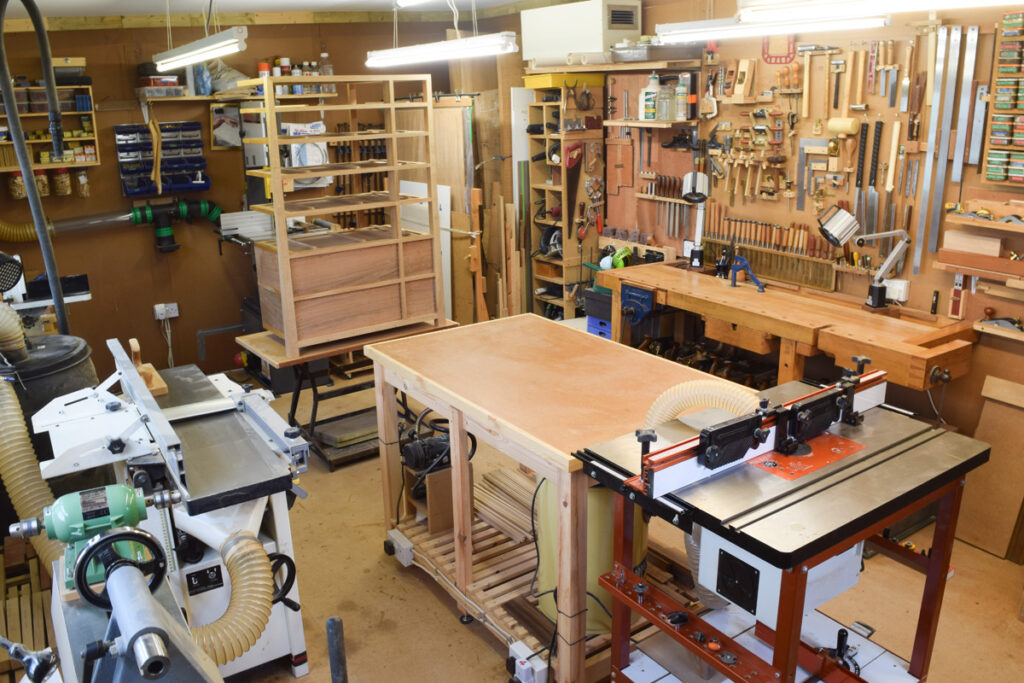Every dedicated DIY-er needs a space to work undisturbed, but most contemporary homes tend to lack one because of their small size. Because of that, finding a place for woodworking or other projects can be difficult.
It’s actually a misconception that you need a lot of space for such types of activities. In reality, dedicating a small area of your garden and constructing a workshop space can be the ideal solution for this problem. Even though it won’t be spacious, you can still achieve a versatile workshop that you can easily keep organised and tidy with just a few simple tricks.
Naturally, it will all depend on the work you want to carry out, but the advice provided in this article should be sufficient to cover the most common mistakes and strike a balance in your working space.
Preparation for Construction
To kickstart your workshop construction, head to the nearest DIY or home improvement store and invest in a good quality pre-fabricated flat-packed shed or workshop. Alternatively, you can also check the available options online.
Another solution is to create one yourself. There are many advantages to designing your own ideal working space. You can both start from scratch or adapt some of the various free models available on the Internet. However, for this task, you’ll still need to visit a home improvement store and get the necessary supplies.
Besides getting the necessary tools and materials for construction, handyman experts highly recommend checking the local planning regulations and building codes. Even though, in most cases, a workshop will fall under the heading of permitted work, and there likely won’t be any paperwork or permissions involved, it will ensure that you won’t face any legal complications in the future.
Planning the Workshop
The planning part of the construction process is undoubtedly the most important one. Luckily, pencils and paper are inexpensive, and careful planning will ensure that you end up with a design that makes the most of the available space and that it will exactly fit your needs and preferences.
To make the planning of your workshop easier, take these factors into consideration:
- What do you want to be able to use your workshop for?
- What do you want to put in it?
- How big do you want and need the space to be?
Lastly, before you start building on the ground, plan your workshop on graph paper. Once you have the dimensions, you’ll be able to put together a shopping list for the materials you’ll need more easily.
Materials You’ll Need
There are plenty of options for suitable materials you can use for your workshop construction. Before you start, to keep the costs down, look around your home for any leftover ones that can be re-purposed and re-used. Besides that, check out any local junk yards for second-hand construction materials. These can be pallets, for example, which you can buy inexpensively and adapt for your own use.
Concrete blocks and old pallets can have an excellent purpose as foundations and base for your workshop. In addition, wood for framing and OSB boards for walls will be enough to create a simple board and batten system. You can also use plexiglass instead of glass as it’s lighter and a lot cheaper. For the roofing, any leftover laminate or plywood, primer and exterior paint will be sufficient to weatherproof your construction.
Tools You’ll Need
If you are a DIY enthusiast, you’ll likely already have most of the tools you’ll need to build your workshop. However, there still may be one or two larger items that would come in handy. For example, if you haven’t invested in a circular or table saw yet because you’ve had no space to store it, it’s a good idea to consider purchasing one for construction.
The Building Process
Building a tiny workshop is actually easier than it appears to be. Like many other construction projects, it’s a matter of doing things step by step and focusing on precision and quality.
To begin with, strong foundations are a must for the construction of your workshop. However, it isn’t necessary to pour a concrete floor. You can simply spend a little time compacting the soil in the area and ensuring that each block is levelled. Once you have a solid deck foundation, your walls will be able to go up straight and firm. When doing this part of the process, make sure to allow a sufficient air gap below the wooden flooring to avoid moisture problems.
Make Your Tiny Workshop Feel Bigger
A tiny workshop can quickly start feeling cramped and disorganised. However, with a few clever tips and tricks, it can become bigger, which will make your DIY work easier and your time spent on it more enjoyable. No matter if your tiny workshop is in your garage, basement or garden shed, the most important thing is to make the best use of the limited space.
Provide Good Lighting
If your workshop is small and it’s too dark, this can make it feel unnecessarily small. To avoid this, consider installing bright LED lights. Besides providing an adequate amount of light inside it, avoid painting the walls a dark colour as it can also contribute to this issue.
Scale the Workshop Furniture Properly
Oversized workshop furniture that hasn’t been considered and scaled properly to the size of the space will make your tiny workshop feel even smaller. Make sure you opt for pieces that provide you with enough working surface but also allow you to have enough space to move.
Keep the Worksapce Organised
Naturally, a disorganised space can quickly start to feel cramped and cluttered. In contrast, organised spaces, regardless of their size, will always appear and be more spacious and larger. With careful planning and appropriate furniture that allows enough storage space, this problem can be avoided and make your work easier. Consider pieces such as a space-saving workbench, a space-saving saw stand or a space-saving table station.
Final Words
As you progress with your building work, you’ll probably realise that almost every step of the process involves tasks you’ve already performed before, but now they’re on a slightly larger scale. If you’re ever in doubt, remember that you can find an abundance of resources to help you on the Internet, such as plans, photos and video tutorials. They will quickly point you in the right direction and give you the inspiration and instructions you need.
However, the only exception to this is the installation of electrics and wiring. Unless you have the necessary skills and knowledge to perform this job, call a qualified electrician to do it for you. Dealing with electricity is a hazardous task that can lead to many safety complications if it’s not handled correctly.


